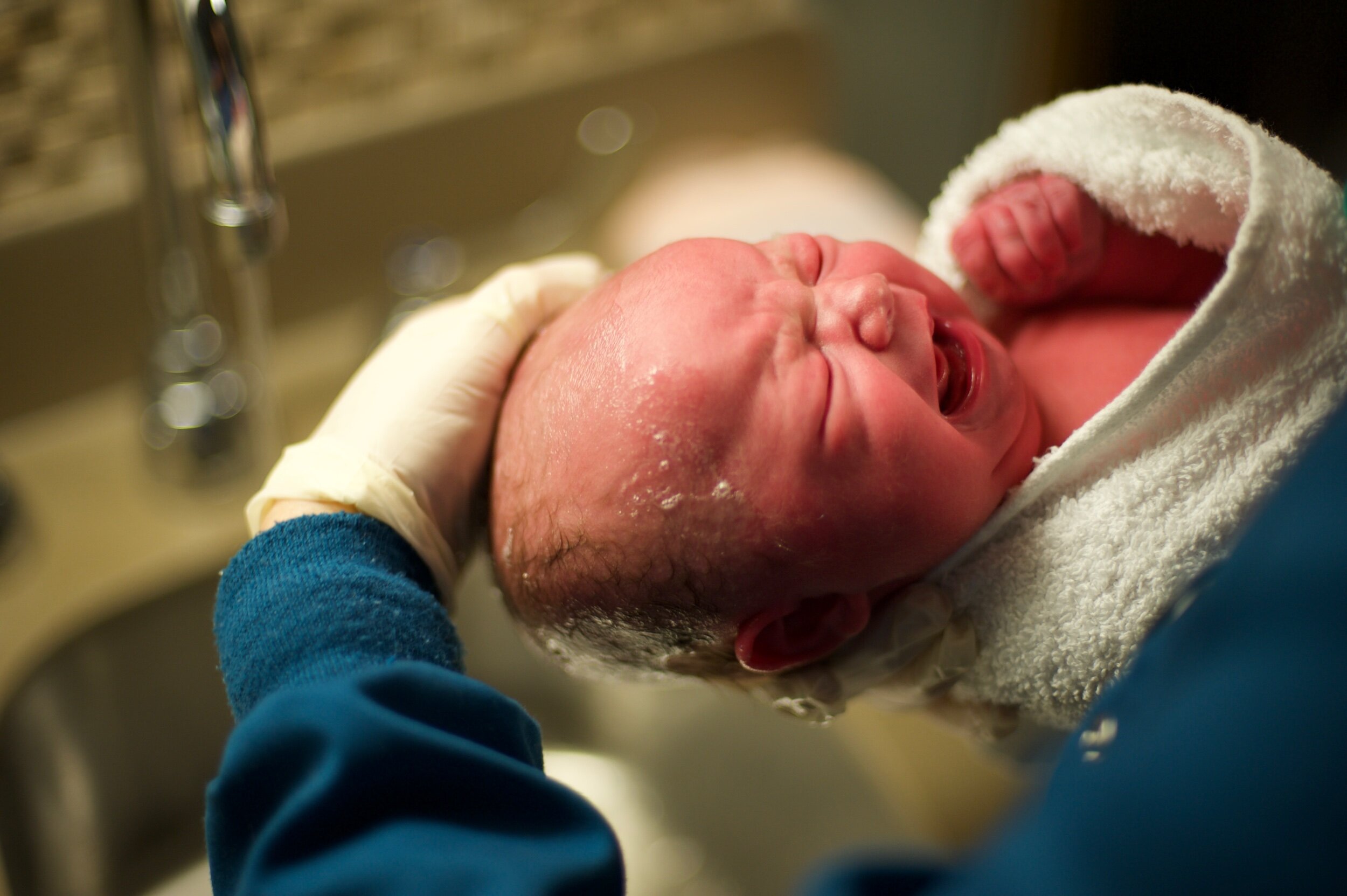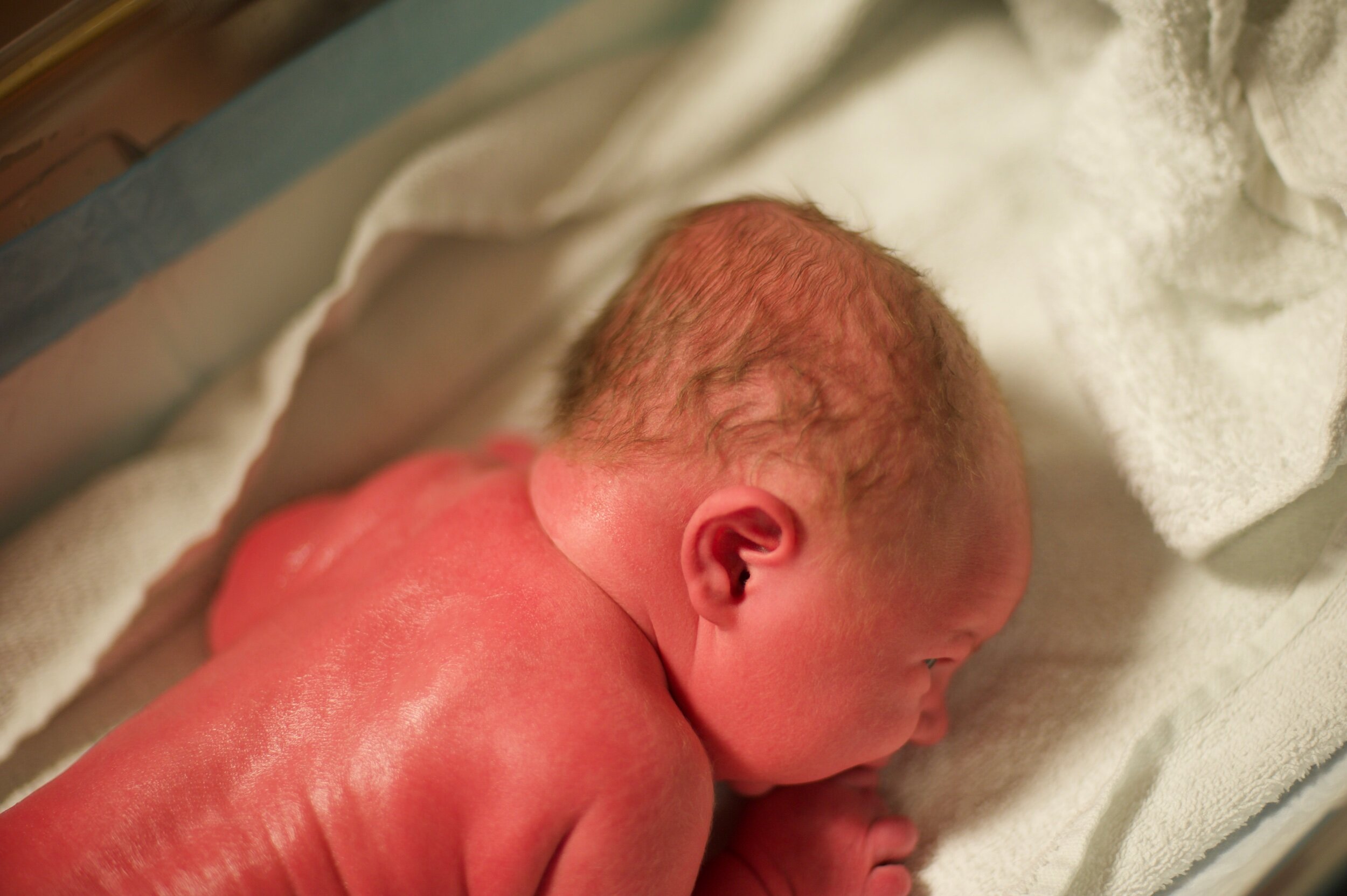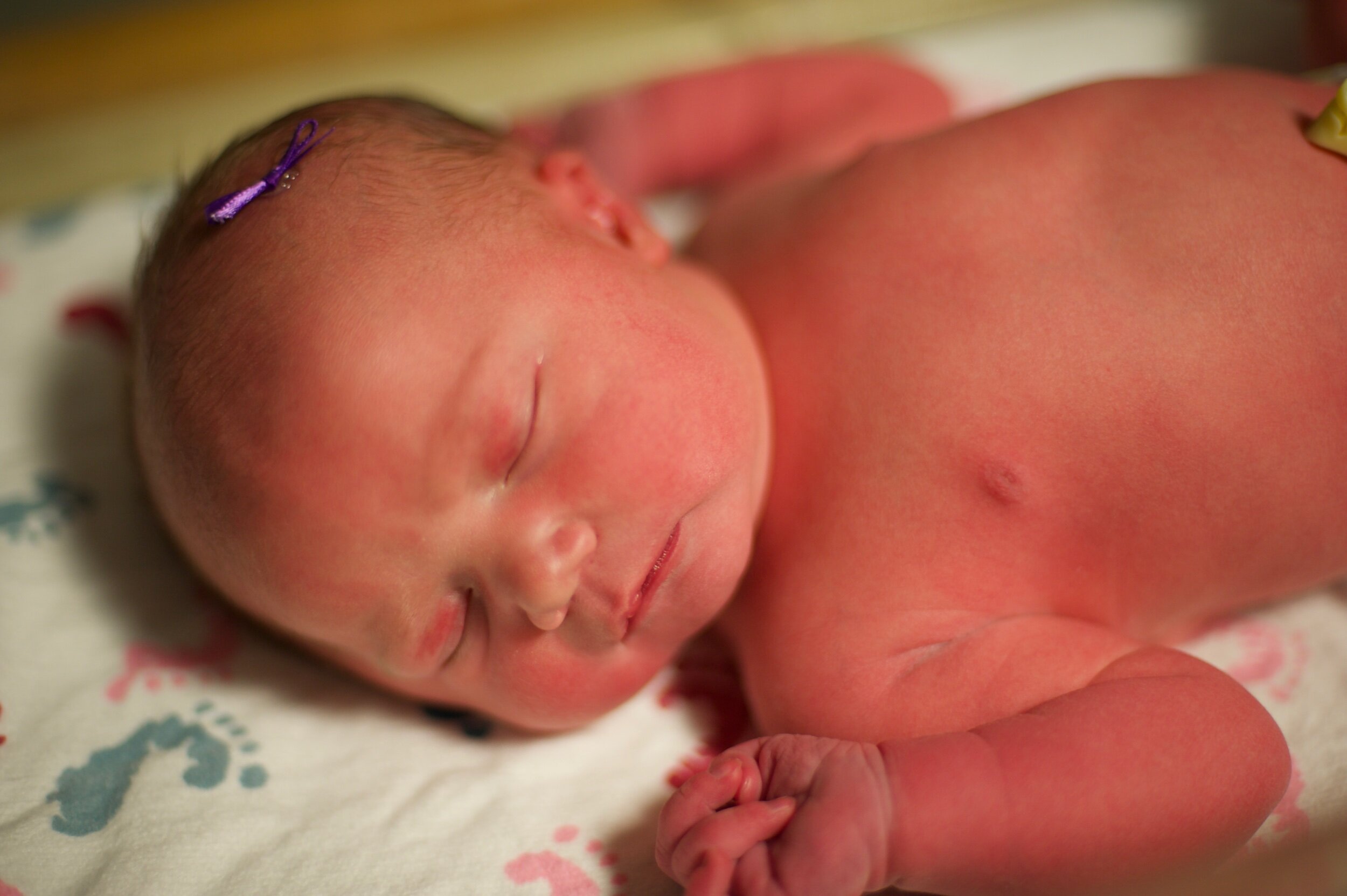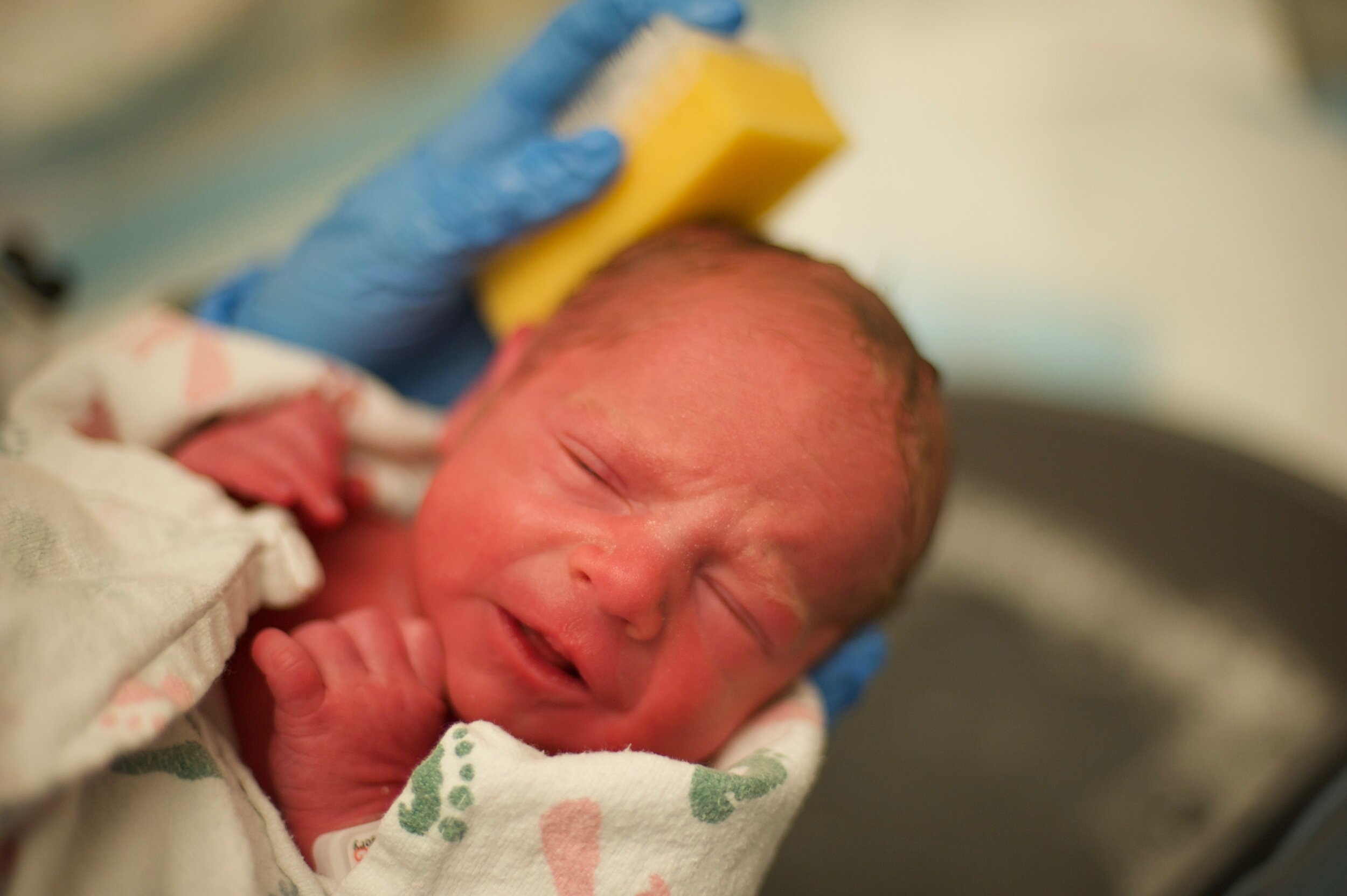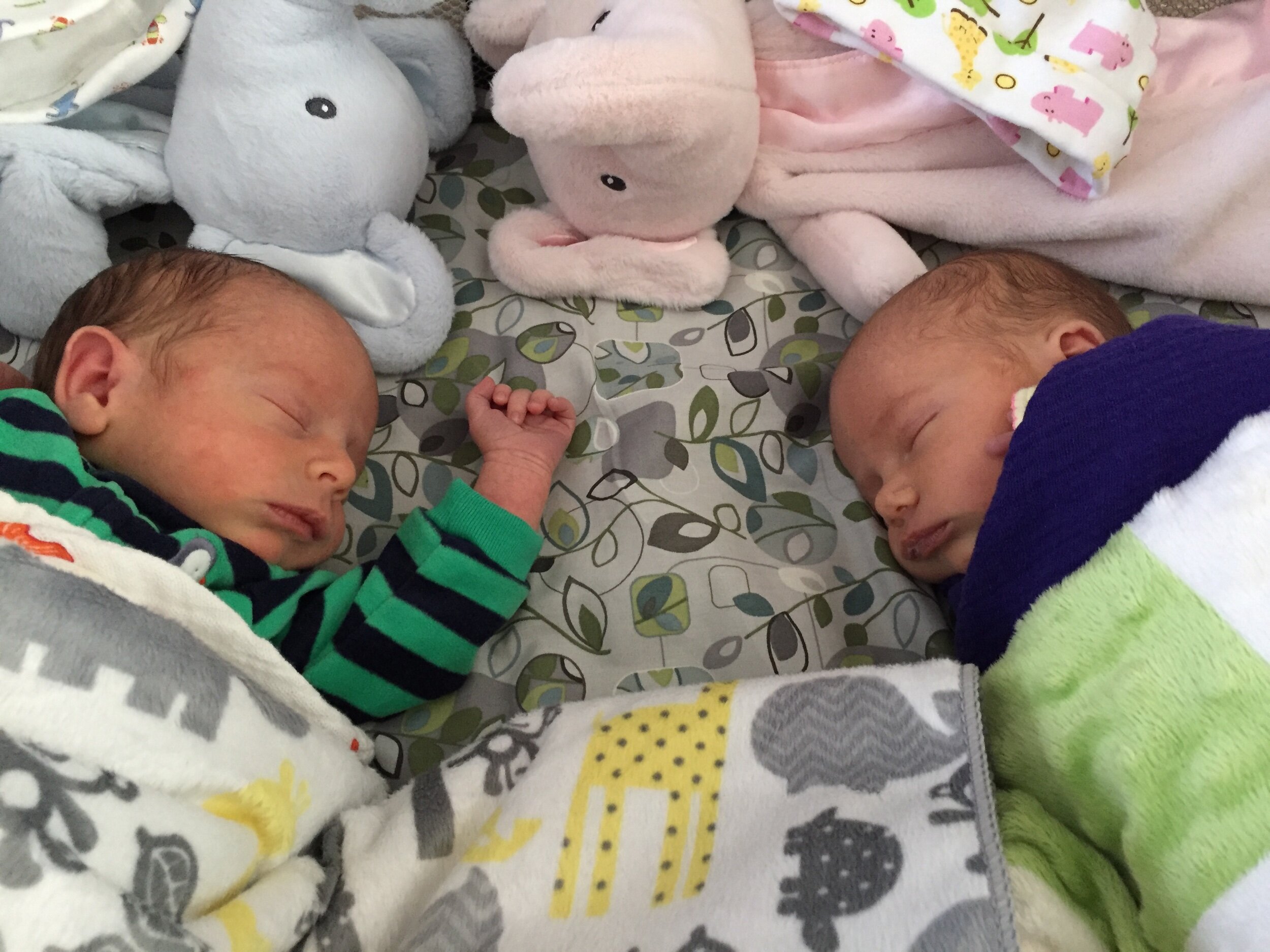Episode 35: Does My Baby's Head Look Funny. Let's Talk about Craniocynostosis and Plagiocephaly
Dr. Joanna Parga-Belinkie joins Dr. Anna Zimmermann on the Mighty Littles Podcast to talk about baby heads. One of the most common questions we get as pediatricians and neonatologists from new moms is, “Does my baby’s head look funny?” Honestly, most of the time the answer is yes. Because baby heads are supposed to be flexible and mobile in order to be born.
Elizabeth and Lincoln on the day they were born. They would always turn their faces towards each other.
In this episode, we discuss both craniosynostosis and plagiocephaly. Why it happens, how to spot it, and what we can do about it. Below, I have included a few definitions and pictures for you to see, since this is such a visual topic.
Craniosynostosis: a condition in which the sutures (where 2 bones connect) close too early, causing problems with normal brain and skull growth. Early closure of the sutures may cause pressure inside the head to increase and the skull or facial bones to change from a normal, symmetrical appearance.
In this episode, we discuss a few of the more common premature suture closures that can lead to craniosynostosis.
Sagittal: Scaphocephaly. The head is long and narrow.
Coronal: Anterior Plagiocephaly. Flattening of the forehead
Lambdoid: Posterior Plagiocephaly. Flattening at the back of the skull and the ear
Metopic: Trigonocephaly. Triangular-shaped heads.
A diagram of the shape of infant skulls and different types of craniosynostosis.
Positional plagiocephaly: (sometimes called deformational plagiocephaly) is a very common, very treatable disorder. Plagiocephaly develops when an infant’s skull becomes flattened in one area, due to repeated pressure on one part of the head. Many babies develop plagiocephaly (up to 40-50%) oftentimes by sleeping regularly in one position. This condition occurs more often in premature infants whose skulls are especially pliable and in multiples.
Image credit: Contemporary Pediatrics


